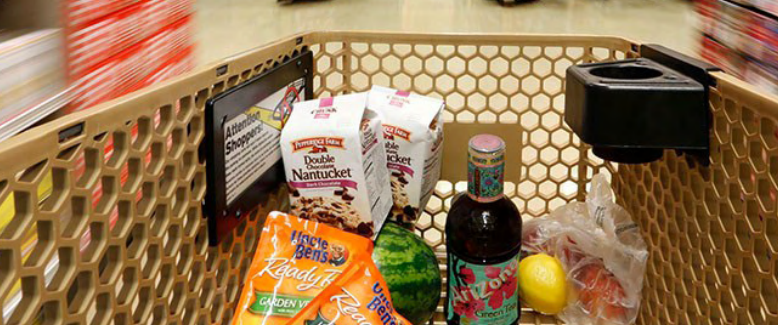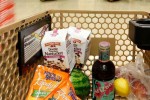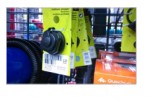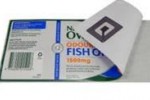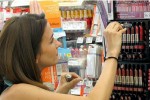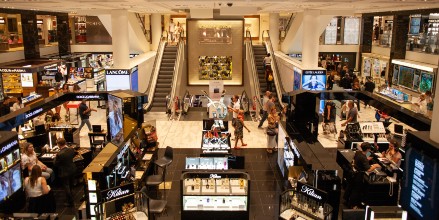You may not be up-to-date with the latest and greatest in source tagging so we’re here to give you a thorough overview of what it is, how it works and how it can benefit your business.
What is source tagging?
Most of you will be familiar with an EAS Security system – this is the security system that many retail and supermarket outlets use to deter theft attempts of their products. The idea behind these systems is simple – products have a security label or sticker attached to them and if they go past a certain point (usually security gates) an alarm that can be visual or create a sound (or both) alerts staff that a product has been stolen.
Source tagging is the process of adding security labels at the manufacturing or packaging stage. This means security labels are integrated into the label when the product is being packaged or boxed in the factory.
Adding security labels to your products this way can create considerable cost savings and can lead to greater retail efficiencies, higher profitability and lower shrinkage.
What type of products are usually source tagged?
There’s a wide range of products that can be source tagged. This will obviously depend on your manufacturer but to give you an idea of some of the common products that are source tagged, take a look at the list below:-
- Clothing and apparel
- Appliances
- Bathroom items (soaps, shampoos, razors, etc)
- Home decor items
- Mobile phones
- Tech accessories
- DVDs & blu rays
- Stationery
- Computers and laptops
- Books
- Toys
- Shoes
- Hardware
- Food
- Pharmaceuticals
- Cosmetics and beauty products
- Merchandise
As you can see this is not an exhaustive list, but it will give you an idea of some of the more common products that go through the source tagging process.
What are the benefits of source tagging?
There are many significant benefits to source tagging – these can include but aren’t limited to:-
- It creates a consistent approach to label placement and application techniques
- Increase in store productivity as there is a reduction in time spent applying EAS labels in store
- Enables a risk management policy that can target high risk products or merchandise
- Products get to the shelves quicker as they arrive at the store ‘shelf ready’
- Increases theft deterrence and is a key driver in reducing shrinkage
- Retail staff can spend more time on the sales floor, not adding labels to products
- Products can be displayed in a more open manner
- Consumers are more likely to steal an unprotected item
- Source tagging items gives potential thieves a visible theft deterrent
- Protects the premium look and feel of packaging better than in-store labelling
I thought source tagging was only done by Checkpoint?
The worldwide operating frequency for EAS theft prevention systems is 8.2 MHz.
Both Easitag and Checkpoint manufacture labels with this frequency for their EAS labels. The high manufacture, volume efficiency and quality standards of the Easitag Hi Q-Factor security labels ensures that our labels work just as well if not better than Checkpoint labels.
Whilst there are many retailers and product manufacturers that use Checkpoint Systems for their source tagging, if a label from another supplier works with an EAS system, these can certainly be used.
What do source tagged products look like?
As the tag is applied at manufacture in most cases the EAS tag is hidden from view so sourced tag products look no different to non-sourced tag products.
Does source tagging impact on my manufacturing time?
Of course changing an element of your manufacturing process will take some time to research, set up and implement, but once source tagging of your products is put in place the benefits far outweigh the minimal time additions to your manufacturing process to add source tagged EAS labels.
What’s the process of getting my products source tagged?
The first thing to do would be to talk to us today about source tagging your merchandise for retailers by calling 1800 077 375 and we can go through the entire process with you over the phone. If you want to know now, here’s a rundown of how our source tagging services work.
Evaluation
We will evaluate your products and manufacturing processes to ensure that your products are suitable for source tagging.
Options
We will run through with you all the different labeling options and application methods that may suit your product range. We test these labels both in-house and in-store to ensure maximum detection is achieved.
Recommendations
Once all options have been explored, evaluated and finalised we discuss with your supplier to ensure a cost-effective approach to the application of your source tagged labels.
Need samples or further assistance?
We welcome further enquiries and, upon request, we can provide samples of the label range for further inspection and evaluation.
Freecall us today on 1800 077 375.

